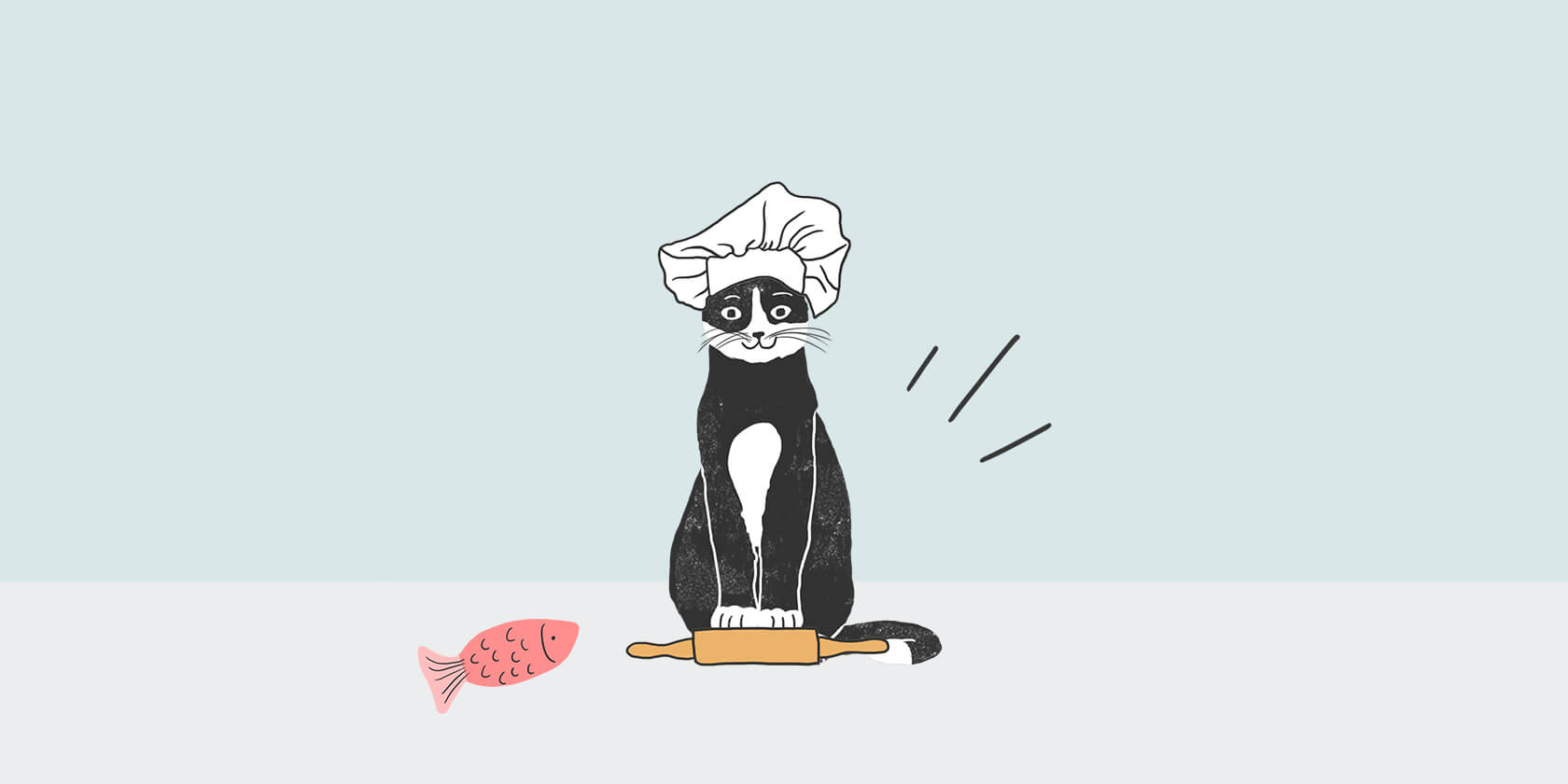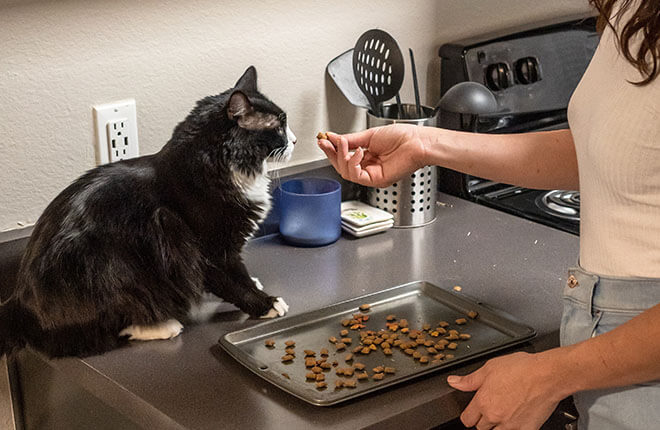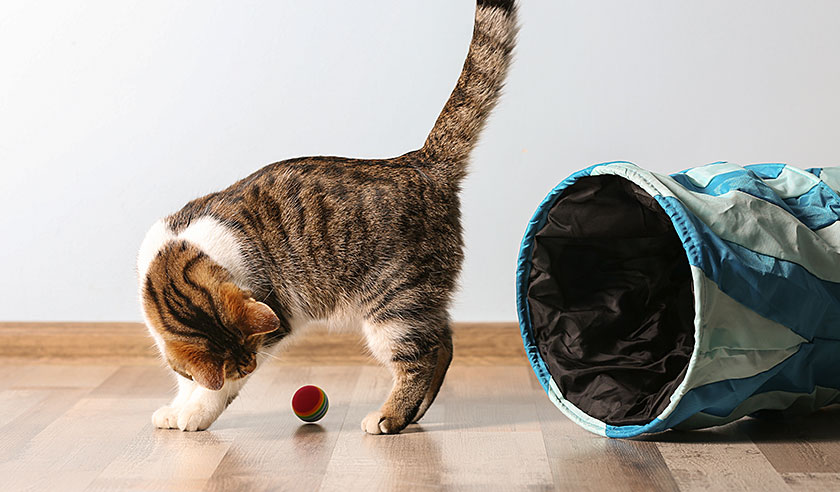It’s no secret that cats love delicious treats — and what better way to show them you love them than by making these homemade three-ingredient salmon treats? Not only are these salmon cat treats easy to make, but they have enormous nutritional benefits for your furry friend.

Salmon is a great source of protein and contains cat-friendly vitamins and minerals like niacin, potassium, selenium, and Vitamins B6 and B12. Since cats are obligate carnivores, protein and vitamins are crucial components to providing a healthy and nourishing diet. These homemade salmon cat treats also contain omega-3 fatty acids which are beneficial to a feline diet. Keep in mind that you should only feed your cat properly cooked salmon, and that even this healthy treat should only be given in moderation.
These salmon cat treats can easily be made at home with just three ingredients — salmon, flour, and egg.
Ingredients
- 10 oz canned salmon, undrained (packed in water, not oil)
- 1 egg, beaten
- 2 cups whole wheat flour
Instructions
- Preheat oven to 350°F.
- Pulse 10 ounces of undrained, canned salmon in a food processor to chop as finely as possible.
- In a stand mixer, combine salmon, 1 egg (beaten), and 2 cups whole wheat flour until dough forms. If the dough is too dry, add up to 1/3 cup water. If it's too wet or sticky, add a bit more flour. The dough should be tacky but not sticky.
- Roll dough on a floured surface until about 1/4-inch thick. Use a 3/4-inch cookie cutter in the shape of your choice to create your treats.
- Place treats on a parchment-lined baking sheet and bake at 350° F for about 20 minutes. When they’re slightly browned and crunchy, they’re done.
- Allow to cool before serving.
- Store in an airtight container for up to 2 weeks.
Recipe inspired by TheCookieRookie.com. Always check with your veterinarian before giving your pet any new foods, especially "people foods." What might be okay for one pet might not be good for yours, depending on multiple factors such as their age, health history, health conditions, and diet. Pets on prescription diets should not be fed any food or treats outside their diet.
ZPC-01558R1





